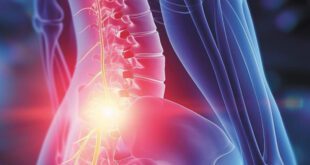 Elevating your legs for at least 20 minutes daily can offer significant health benefits, particularly in circulation, vein pressure, and swelling.
Elevating your legs for at least 20 minutes daily can offer significant health benefits, particularly in circulation, vein pressure, and swelling.
Below is an overview of these benefits and practical advice on elevating your legs effectively and safely.
Improved Circulation
When you elevate your legs above the level of your heart, gravity assists in directing blood flow back toward the heart. This helps facilitate the return of oxygen-depleted blood from the lower extremities, which can be particularly beneficial for individuals with venous insufficiency or those who spend extended periods standing or sitting. Enhanced circulation can reduce the risk of blood clots, alleviate symptoms of chronic venous insufficiency, and contribute to overall cardiovascular health.
Reduced Vein Pressure
Prolonged sitting or standing can cause blood to pool in the lower extremities, leading to increased venous pressure. Over time, this can develop or worsen varicose veins, a condition where veins become enlarged and twisted due to improper valve function. Elevating the legs reduces the gravitational pressure on the veins, helping to prevent blood pooling and alleviating the symptoms associated with varicose veins, such as swelling, aching, and heaviness.
Decreased Swelling
Edema, or swelling caused by fluid accumulation, often occurs in the legs due to various factors, including prolonged standing, sitting, or underlying health conditions such as heart or kidney disease. Elevating the legs promotes the reabsorption of excess fluids into the bloodstream, which the kidneys can then excrete. This can significantly reduce swelling and provide relief from associated discomfort or pain.
How to Properly Elevate Your Legs
To maximize the benefits of leg elevation, it’s important to follow these guidelines:
1. Use a Pillow: Place a pillow or a leg wedge under your legs to achieve the correct elevation. The pillow should be firm enough to maintain leg elevation but soft enough to ensure comfort.
2. Elevate Above the Heart: Position your legs so they are elevated above the level of your heart.
This optimizes blood flow back to the heart and enhances the benefits of leg elevation.
3. Support Both Thighs and Calves: Make sure both your thighs and calves are supported during elevation to prevent downward bending of the legs, which could reduce the effectiveness of the elevation and cause discomfort.
4. Gently Bend Your Knees: Slightly bending your knees can help reduce strain on your joints and tendons, making the position more comfortable for more extended periods.
5. Maintain Comfort: Ensure that your neck and back are comfortable. Avoid awkward angles that may cause strain or discomfort, particularly if you plan to elevate your legs for an extended time.
6. Use Specialized Pillows: Consider using pillows designed explicitly for leg elevation. These can help achieve the proper height and angle, particularly useful for individuals with chronic venous conditions.
7. Consistency is Key: Elevate your legs daily for optimal results. Aim for at least 15-20 minutes each session, preferably in the evening when your legs are most likely swollen.
8. Wear Loose Clothing: Choose loose, comfortable clothing that doesn’t restrict blood flow or applies pressure to your legs during elevation.
Recommended Duration and Frequency
To effectively reduce swelling and improve circulation, it’s advisable to elevate your legs for 15-20 minutes at a time, 2-3 times per day. This regular practice can help maintain healthy circulation and prevent fluid buildup in the legs. Incorporating this routine into your daily activities, such as watching TV or reading, can make it easier to sustain over time.
Safety Considerations
While leg elevation is generally safe and beneficial, certain medical conditions may require caution. Individuals with Peripheral Arterial Disease (PAD) or Congestive Heart Failure (CHF) should consult their healthcare provider before regularly elevating their legs. Elevation might exacerbate symptoms like foot pain or difficulty breathing when lying flat in these conditions. A medical professional can provide personalized advice on whether leg elevation is appropriate and how to modify it.
Why Elevate Above the Heart?
Elevating your feet above your heart is particularly beneficial because it reduces the heart’s effort to circulate blood. By alleviating the burden of gravity, this position helps improve venous return, reduces swelling, and can alleviate symptoms associated with venous disorders.
Regular leg elevation is a simple yet effective practice providing numerous health benefits, particularly for those prone to circulation issues, varicose veins, or leg swelling. Incorporating this practice into your daily routine and following the proper techniques can help maintain optimal leg health and overall well-being. Always consult a healthcare provider if you have underlying health conditions that may affect the safety of leg elevation.
For more information or to book an appointment, contact Central Florida Vein & Vascular Center today. Your journey to healthier veins and improved well-being starts here.
Get support for your veins and circulation problems today.
You may need medical treatment for your veins, and the Central Florida Vein and Vascular Center wants to help. Contact us today to learn more about our services and how we can help you live better. Our board-certified Vascular Surgeons and Phlebologists specialize in minimally invasive vein therapy.
For more information regarding the prevention of varicose veins, please see our blog at: https://cfvein.com/blog/leg-elevation-tips-and-guide/
Central Florida Vein and Vascular Center
(352) 562-0078 . www.cfvein.com
13953 NE 86th Terrace, Unit 101
Lady Lake, FL 32159
MOST PROCEDURES ARE
COVERED BY INSURANCE
Convenient Golf Cart Path Access
 Central Florida Health and Wellness Magazine Health and Wellness Articles of the Villages
Central Florida Health and Wellness Magazine Health and Wellness Articles of the Villages



